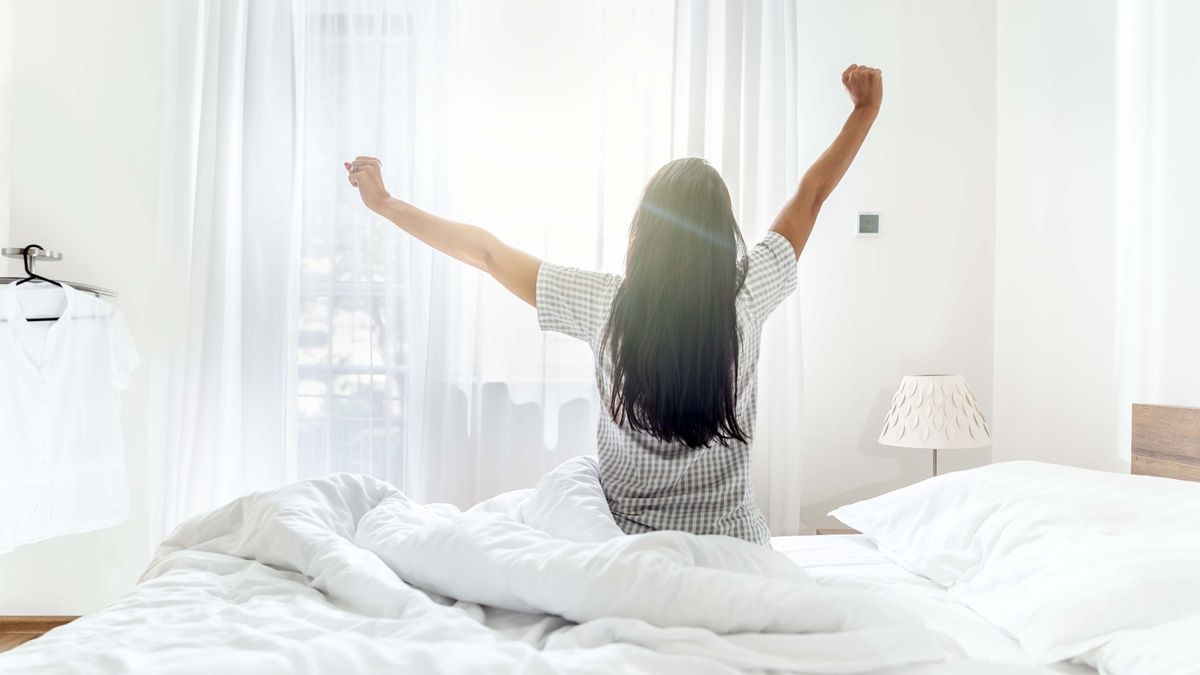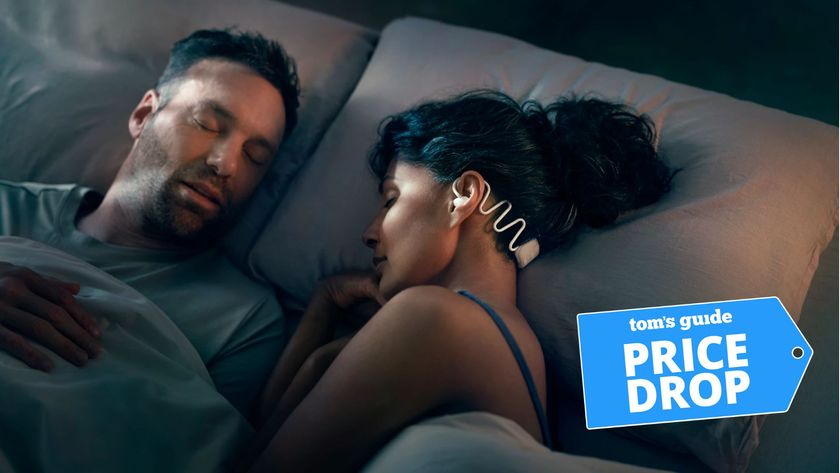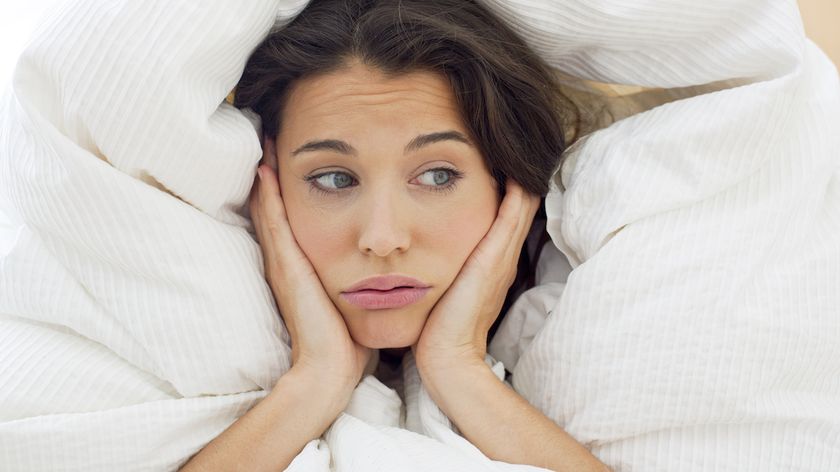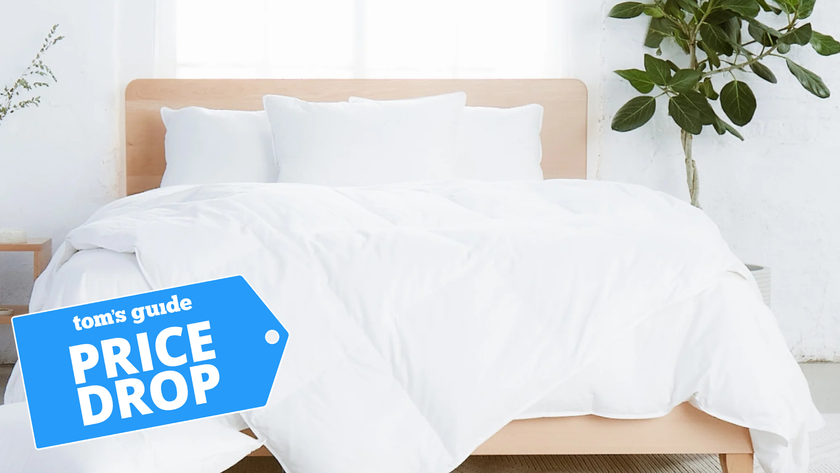
Brown noise has been doing the rounds on TikTok as the latest trend for deep sleep, relaxation, and focus, but could brown noise improve your workouts, too? We got to work sifting the science to find out.
A disturbed night's sleep is common, especially at this time of year. According to the Sleep Foundation, almost half of all Americans say they feel too sleepy during the day, with 35.2% getting less snooze than the recommended 7-9 hours of sleep per night. This could have a significant knock-on effect on your energy levels, focus, and workout effectiveness.
Most people know that white noise can help with sleep, but you're perhaps less familiar with brown noise. Here, we cover what it is and some of the perceived benefits. We even provide a video you can follow for better sleep, boosted energy levels, and more effective workouts, curated by the #1 meditation and sleep app Calm.
Find the best mattresses for back pain here, and discover if 8 hours of sleep is enough, or read on to find out more.
@calm ♬ original sound - Calm
What is brown noise?
You may have seen brown noise videos circulating TikTok under #brownnoise. The trend picked up a massive cult following in ADHD (Attention Deficit Hyperactivity Disorder) groups and has subsequently spread worldwide, with viewers reporting deep calm, focus, and reduced stress levels after listening to brown noise.
There are tons of curated Spotify and YouTube playlists now widely available for free, but does the science back it up?
Science tells us that sounds have “colors” defined by the bandwidth of frequencies. Who knew? Brown noise is a low-frequency sound with minimal sound variations, so rather than changing speeds and tones, the sound has little tonal variation. You can expect low rumbly noises such as thunder, strong winds, the ocean, heavy rain, or the gentle hum of an airplane.
Sign up to get the BEST of Tom's Guide direct to your inbox.
Get instant access to breaking news, the hottest reviews, great deals and helpful tips.
The term was coined by the 19th-century botanist Robert Brown (so nothing to do with color, then), who discovered Brownian motion — a random type of movement pattern that brown noise mimics. It creates a deeper, richer sound, also known as red noise.
How does brown noise differ from white or pink noise?

Brown noise is deeper and rougher than pink and white noise and has higher "energies" at lower frequencies. White noise refers to a static sound — similar to the fuzz of leaving an old TV on for too long — and has equal energy at all frequencies, and pink noise is a broad-spectrum noise often used in the audio tech testing world. It has more energy in low-frequency ranges, so it sounds lower — similar to a waterfall or running water.
But while research has shown the potential of white and pink noise for improving sleep quality and focus, there’s less robust evidence for brown noise. Despite this, social media touts brown noise as the ultimate way to zone out and relax due to its dull rumbling tones. Recently, it has skyrocketed back into the mainstream, amassing over 95 million views on TikTok.
There's also green noise for sleep, which emphasizes mid-range frequencies, like rustling leaves and gentle streams. These organic sounds are meant to soothe racing thoughts, making it easier to fall asleep.
What are the benefits of brown noise?
Unfortunately, the science is limited in favor of brown noise, but one school of thought is that if white and pink noise is useful, brown noise could be too. Here are some of the perceived benefits:
1. Better sleep
Brown noise reportedly creates an immersive experience because your ears can detect every frequency available, which provides a masking effect on external background noise; it could help people drown out unwanted noise and limit sleep disruption.
During sleep, part of your brain can still sense and respond to sound. You only have to visit a city to know how wild traffic, music, and sirens can be late at night. The frequencies of brown noise act as “sound masks,” meaning it essentially drowns out loud isolated sounds by playing at a continuous frequency. Some research has shown that white noise can improve sleep quality and latency, but not specifically brown noise. That said, people have reported less external noise and distraction.
2. Reduced stress
We already know techniques like breathwork and meditation (you can access a deep sleep meditation here) kickstart the parasympathetic nervous system — your body’s way to relax after a ‘fight-or-flight’ response to stress. But brown noise could have the same soothing effect.
Brown noise is mainly beneficial for people with busy minds and who suffer from anxiety or overthinking — particularly those with ADHD. Those who have documented their experience on social media have reported less internal chit-chat or repetitive thoughts, bringing them to a state of calm and zen after listening to brown noise on loop.
It could be down to the masking effect that acts as a handy anxiety blanket for your ears and mind, and some evidence shows it could be down to “stochastic resonance,” but more on that below.
3. Enhanced focus
People who have listened to brown noise consider it a good work or workout soundtrack because it can reduce distracting noises and improve focus — also known as auditory masking. However, there is limited evidence to support this.
That said, a small pilot study mentions “stochastic resonance,” which refers to a certain amount of auditory noise exposure (like white or brown noise) that can improve performance in a brain that isn’t working at its optimum. The study found that this helped people with ADHD perform tasks better, muffling diversions to help them focus on tasks.
People with ADHD have lower dopamine levels (the hormone responsible for attention, memory, and motivation) and can feel overstimulated in any given environment. For example, “background chatter” like a TV playing can’t be sifted out by the brain and feels overwhelming instead. Brown noise could “occupy the brain,” sift out distractions and keep the person focused.
4. More efficient workouts
Listening to brown noise on your headphones could help you to exercise more efficiently due to a boost in focus and concentration. Multiple studies have shown that music enhances mood, decreases your rate of perceived exertion (how wiped you are) during exercise, and whips up some serious motivation.
But this is personal and depends on variables like lyrics, BPM (beats per minute), and exercise type. While I prefer a bit of Taylor Swift when I lift weights, the low-level frequency and minimal sound variations of brown noise could help you zone in during a tough workout session. There are even brown noise workout playlists on Spotify you can try.
The bottom line
A recent 2020 review of studies into noise as a sleep aid found conflicting results as to whether any constant noise at night could help you drift off. Interestingly though, white noise played through headphones generated better results than without.
Our team has tested and handpicked some of the best headphones for sleep if you plan to give brown noise a go. As a caveat, while there are no reported risks directly associated with brown noise, blasting sound constantly into your ears is hardly a recipe for success. Try to limit your exposure to brief bursts or put your smartphone on a timer, keeping the volume low.
We also recommend checking in with a medical professional if you have any existing health conditions. You can access the best sleep apps and best music for sleep for more ways to settle your slumber and find your zen, priming your energy levels for even better workouts.

Sam Hopes is a level 3 qualified trainer, level 2 reiki practitioner and senior fitness writer at Tom's Guide. She is also currently undertaking her Yoga For Athletes training course. Sam has written for various fitness brands and websites over the years and has experience across brands at Future such as Live Science, Fit&Well, Coach, and T3.
Having worked with fitness studios like F45 and Virgin Active, Sam now primarily teaches outdoor bootcamps, bodyweight, calisthenics and kettlebells. She also coaches mobility and stretching-focused classes several times a week and believes that true strength comes from a holistic approach to training your body.
Sam has completed two mixed doubles Hyrox competitions in London and the Netherlands and finished her first doubles attempt in 1:11.


